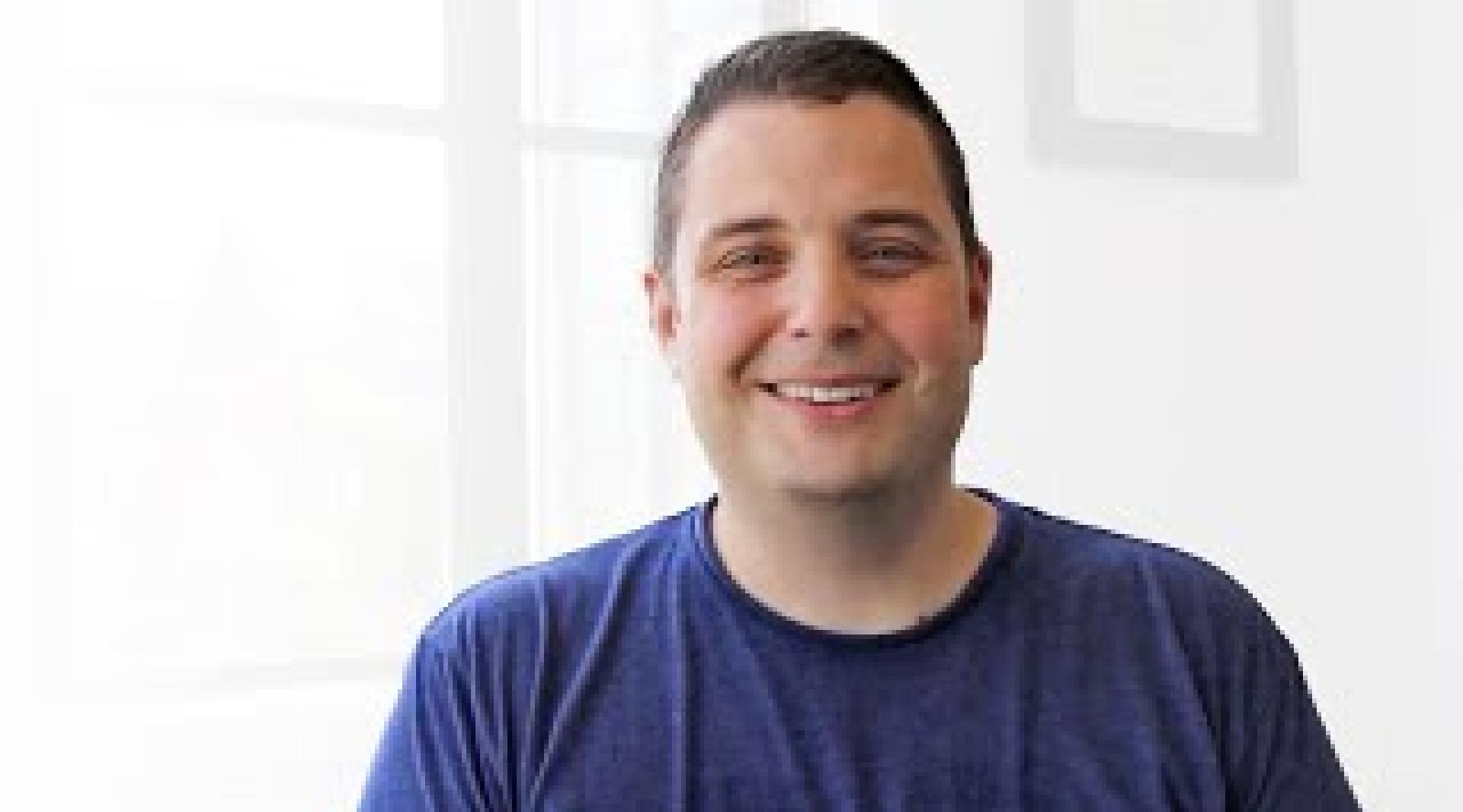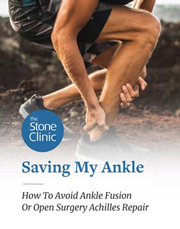Arthritic Ankle Surgery Patient Update (1-Year Post-Op)
AUTO TRANSCRIPT
About nine months ago, I had a large bone graft of my tibia, and I also had an articular cartilage pace graft procedure that was done. And at the time of that procedure, Dr. Stone had let me know that there's a possibility I would need a second procedure to clean up some of the scar tissue that would form and that I might also need to help augment that bone as it grew back. And so I'm back in California now, and I, I just had about a week ago, I had the follow-up procedure done. We looked inside the ankle joint and of course I had scar tissue. Not a surprise. We cut that out. I've got better range of motion now but also we're able to get a camera inside of that joint and we could see the articular cartilage pace graft.
And I'm happy to report I have cartilage. So pretty excited about that. Chokes me up a little bit because that obviously was the goal. And you know, there are doctors out there that'll tell you can't be done. But I'm living proof it can be done. Not only that, but like I think I've mentioned before, Dr. Stone has 20 year plus follow-up visits and studies on people that he has done art particular cartilage graphs for you know, 20 plus years ago. So it can be done. And the best part is, is that once it is done, man, the pain levels go way down. What you can do goes way up. And it's it's incredibly exciting. So the follow up procedure I had done part of that bone is, was still dead in the tibia, and we faced an option.
We could just see if the previous bone graft would finally heal it on its own or we could augment it a little bit. And so, as I understand, there's kind of a sweet spot in there or time period for doing this follow-up procedure. And I decided that I would probably rather try to augment that regrowth of the bone than to wait and see if it made it all the way or not. So we went into the top part of my tibia. We took out some bone marrow. And as I understand, Dr. Stone did his magic spun that down, got some stem cells out, got the bone marrow out, and then he used a really cool product and, and put that all into my ankle. And now the goal isover time, that that product will help the healing. And then that product with my bone graft material will cause that, that last part of the tibia to live again it turn in to turn into living bone. And so I'm really excited about that. So I understand that people have some questions and so about the procedure or they understand that they, that people wanna know more information. And so just wanna tell you how I'm doing. So after the articular cartilage pace graft, you kind of have to
Wait a little while before you can get back into you know, full activity. That cartilage does take time to grow. One of the last things, Dr. <Laugh>, one of the last things Dr. Stone told me was, David, think baby cartilage. And so you have to take it easy for a little while but eventually you do get to do the things that you got to do before. I can lift and carry about as much as I, as I can desire to do. I can walk as far as I really want. The best part is, is when I get up in the morning, I have a little bit of stiffness, but it doesn't take me 3, 5, 10 minutes for it to finally start moving again. It's a matter of a step or two and and it feels really good.
So, and I'm looking forward to that, getting better over time. It's mentally and emotionally freeing to not have to think about my injury or not have to think about the fact that, that this, this condition is only gonna get worse over time. And now I'm at the point post-surgery that I get to look forward because I know that my, my condition is likely to get better over time. And at some point, I'll, I'll reach that plateau. I'll be at the top of that, that healing. I think sometimes doctors call it maximum medical improvement or maximum medical healing. And I know that time will be coming and I'm really, actually, I'm looking forward to it because I can't wait to see what I can do that I couldn't do. And I can't wait to, I think I've, I've said before, I want to play soccer with my kids.
I'm almost there. I still have probably, oh, I think probably three or four months yet before I'm gonna be allowed to do probably whatever, you know, comes to my mind. But I'm really looking forward to it. I'm already planning to do hiking trips. I'm planning on doing other activities that I haven't done. I, I'm looking forward to going to the park again. And instead of just, you know, sitting at the park and watching everyone else do the things that, that, you know, they do, I'm looking forward to taking part in the activities that everyone else gets to take part in. So I'm excited country, and we burn propane and we burn wood for heat. And we, we had run out of wood. It was just so cold. And I was able to go and walk through drifts of snow and get to the wood, and I was able to carry it up.
My kids and I, we carried it up together. And you know what? Just being able to take care of yourself and take care of your family when you're in that position is just so, again, it's freeing. I think freeing is probably the best word to describe what healing can help do for you emotionally and mentally. And then also you start to find more purpose. And you, and you, and you remember where you belong in your family or in your social group. You remember what you're supposed to do. You remember the things that you used to be able to do that you, that you couldn't do. And, and it just, it wakes you up. It makes you alive. And again, freeing is really the best word to describe that. I mean, no one can promise you results. But I look at what is possible and then I think about those 20-plus year studies, and I think about the people that I've met here.
When you come here for surgery, you're gonna meet a lot of people, really cool people. I, I met a guy the last time I was here who was an Olympic skier, downhill snow skiing kind of kind of guy. Had injury to his knee had his, i, I believe he had his meniscus replaced by Dr. Stone. And here he was all these years later and he was back. He was getting ready for ski season. And I thought, well, what does that mean? Well, in the wintertime, he teaches skiing. And so here he is all these years after his original injury with the meniscus that had been replaced by Dr. Stone, he was getting physically ready to go teach other people his passion, his love, which was, which is skiing. I think that's the coolest thing ever. You know, we all have time periods in our life when we get to do things.
And once you, you know, go from one period of time to the next period in your life, you look back at the one you just came from, or think about it like chapters in a book, as they come to a close, you get to the next chapter and you look back and you're like, oh, I really still love that part of my life, but I can't compete or I can't do what I was able to do in that previous chapter in my life. But you still have the love for whatever it is to see them and where they're at, and they still have their passion even decades after their original injury. So I know that I've seen it, I've experienced it, and I want the same thing. And so the decision to come back, like I said, I didn't want to come back and have a surgery no one ever does. But I knew the benefits outweighed the risks and outweighed the potential that maybe I would get nothing out of the surgery. But I don't think that's the case. I'm pretty certain that in a few months I'm gonna have use of my ankle. Like I, hopefully, like I did before my injury.
Dave H Profile
Here is an update from our patient David one year after his articular cartilage repair for his ankle. Watch how David's story began here.


